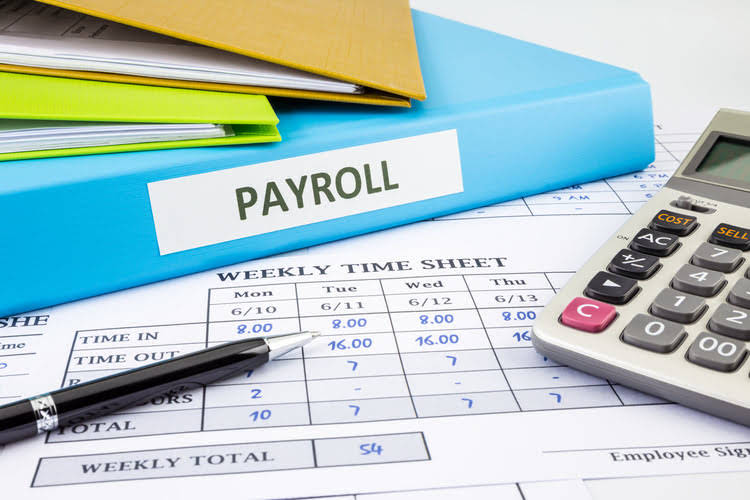
Overall, encumbrance accounting serves as a crucial tool for effective budget management, accurate financial reporting, informed decision making, and maintaining financial control and accountability. By utilizing encumbrance accounting practices, organizations can optimize their financial resources, enhance transparency, and foster fiscal responsibility. Encumbrances and actual expenses are two critical components in the realm of financial management and accounting.
- In government, public sector, and non-profit organizations, strict regulations and reporting standards must be adhered to.
- This encourages transparency and increased visibility in how the budget is being allocated and how money is being spent.
- Any encumbrance funds are not part of the actual funds ledger balance, because payments haven’t been processed.
- Our goal is to help you understand your company’s larger financial picture so you can be competitive, increase revenues, and find ways to expand.
- We’re happy to put together a packages of accounting services that will be perfect for your business.
By recording encumbrances, businesses can accurately forecast their financial obligations and ensure that they have sufficient funds to cover these commitments. Throughout the encumbrance accounting process, organizations maintain a comprehensive record of their financial commitments, from the initial identification of needs to the final settlement of obligations. This systematic approach helps organizations effectively manage their budgets, comply with regulations, and maintain financial transparency. Its multifaceted uses contribute to responsible financial management and informed decision-making. The primary purpose of encumbrance accounting is to ensure that funds are set aside in advance for anticipated expenses, contracts, or commitments.
Explaining the encumbrance accounting process
Encumbrance accounting has three main phases, in line with those for procuring goods or services. As indicated last year, blanket PO changes should be limited to one necessary change only, including extending the due date. At FY end, OMNI will be used to roll “qualified” purchase orders forward to the new fiscal year. PO Rolling means that the remaining dollar amount of the existing purchase order will be encumbered in the new FY. If you love scoring high on video games, just wait until we set up goal scores for your business.
By doing so, organizations can maintain fiscal discipline and avoid overspending while accurately reflecting their financial positions in their accounting records. encumbrance accounting is a specialized financial management practice that involves tracking and recording financial commitments, reservations, or obligations made by an organization. This helps organizations track and control their spending and ensures that resources are available when needed for planned expenses. This method of accounting helps institutions set better budgets and control overspending and maverick spending. It also increases transparency between departments and aids in correct financial reporting. Implementing AP automation software can significantly help companies sync data for accurate encumbrance accounting and gain control over their finances.
Encumbrance Accounting: Ensuring Financial Accuracy and Efficiency
These examples illustrate how encumbrances are utilized in various scenarios to track and manage financial obligations. By recording and adjusting encumbrances, organizations can effectively manage their budgets, track actual expenses, and ensure financial accountability. With how essential an accurate fund balance is, there are many ways accounting teams have tried to track this data. One type of accounting that hopes to anticipate future budgets better and provide budgetary control options is encumbrance accounting.
- This accounting method helps you track and manage your financial commitments, ensuring that you have enough funds to cover future expenses.
- From the setup of a more precise budget amount to avoiding red spending flags, encumbrance accounting can help your company have more accurate and helpful general book sets.
- This money during this phase has been requested, but not yet approved for the purchase.
- We’ll provide the data you need to track expenses and monitor cash flow and will design a personalized strategy to proactively reduce taxes.
- On a regular basis, departments are required to review all open purchase orders (PO) to ensure that those POs are necessary and accurately reflect current business.
- With encumbrances, no payments are issued, and no actual expenses are posted to the general ledger since it is an expectation of a future actual transaction.
These expenses are recorded in the general ledger as a transaction to the encumbrance account. Once the invoice has been received or paid, the money is transferred to the accounts payable account or vendor’s bank account in the general ledger. An encumbrance, also called a pre-expenditure, is a method of tracking future period payments prior to the finalization of the project or the receipt of goods. Think of encumbrances as reserved funds to later pay pre-determined liabilities that will occur later. There are different encumbrance types, ranging from reserves for payroll to money set aside by budgetary control groups for things like contingency expenses. One of the key trends in encumbrance accounting is the integration of artificial intelligence (AI) and machine learning capabilities.
What is the Difference Between an Encumbrance and an Accrual?
Encumbrance is performed in three steps – pre-encumbrance, encumbrance and expenditure and is recorded in two journal entries. In conclusion, encumbrance accounting is a powerful tool that offers a range of benefits for organizations. It provides better financial management, improved budget control, and more accurate predictions of cash outflow. By implementing encumbrance accounting, companies can enhance their financial stability, allocate resources effectively, and make informed decisions based on reliable financial data. As companies strive for greater efficiency and transparency in their financial operations, encumbrance accounting proves to be an essential component of successful financial management.

The term is used in accounting to refer to restricted funds inside an account that are reserved for a specific liability. Before we journey into the intricacies of encumbrance accounting, we must grasp the foundational concept of an “encumbrance” itself. The definition of an encumbrance is not the same as used in the real estate profession, where it means mortgages, property liens, and easements.